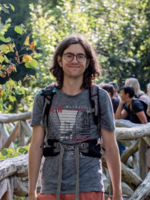How we design our landscapes plays a significant role in maintaining biodiversity and associated ecosystem services such as crop pollination and natural pest control. In the Land4Biodiversity project, we are investigating how the composition and configuration of agricultural landscapes influence the diversity of wild bees, birds, and bats, as well as crop pollination and pest predation.
For this purpose, 32 landscapes, each 1 km2 in size, were selected. These 32 landscapes differ in composition and configuration. Landscape composition is determined by the type and amount of different landscape elements as well as the number and area proportion of different land use types. The focus of Land4Biodiversity here is on the diversity and areas of the crop species grown and the associated land use. Landscape configuration includes field sizes, marginal strips as well as the spatial arrangement of landscape elements of a landscape. The following four methods are used to record biodiversity and associated ecosystem services in the 32 study landscapes:
Yellow pan traps are used to capture pollinating insects, which are then taxonomically identified in the laboratory. These studies provide information on the diversity and abundance of important insect pollinators such as wild bees with differences in landscape heterogeneity. Strawberry plants are used as phytometers to measure pollination services. The quantity and quality of strawberries fruits will be related to the diversity of pollinators. Predation cards are used to record the activity of predators, such as ground beetles and spiders, which are important natural antagonists of pests such as aphids. The diversity and activity of birds and bats will be recorded using automated sound recorders, with species identification based on artificial intelligence.
The individual sub-experiments are carried out by Philipp Merx (strawberry plants, M.Sc. student), Chloé Nourry (predation maps, B.Sc. student), David Becker (yellow tray traps, B.Sc. student), Dr. Thomas Hiller (sound recordings), and Yasha Auer (technical assistant). The project leader of Land4Biodiversity is Prof. Dr. Ingo Graß. The investigations form the basis of several student theses as well as joint scientific publications.
Persons involved
 |  |  |
|---|
| Philipp Merx | Chloé Nourry | David Becker |
 |  |
| Thomas Hiller | Ingo Graß | |